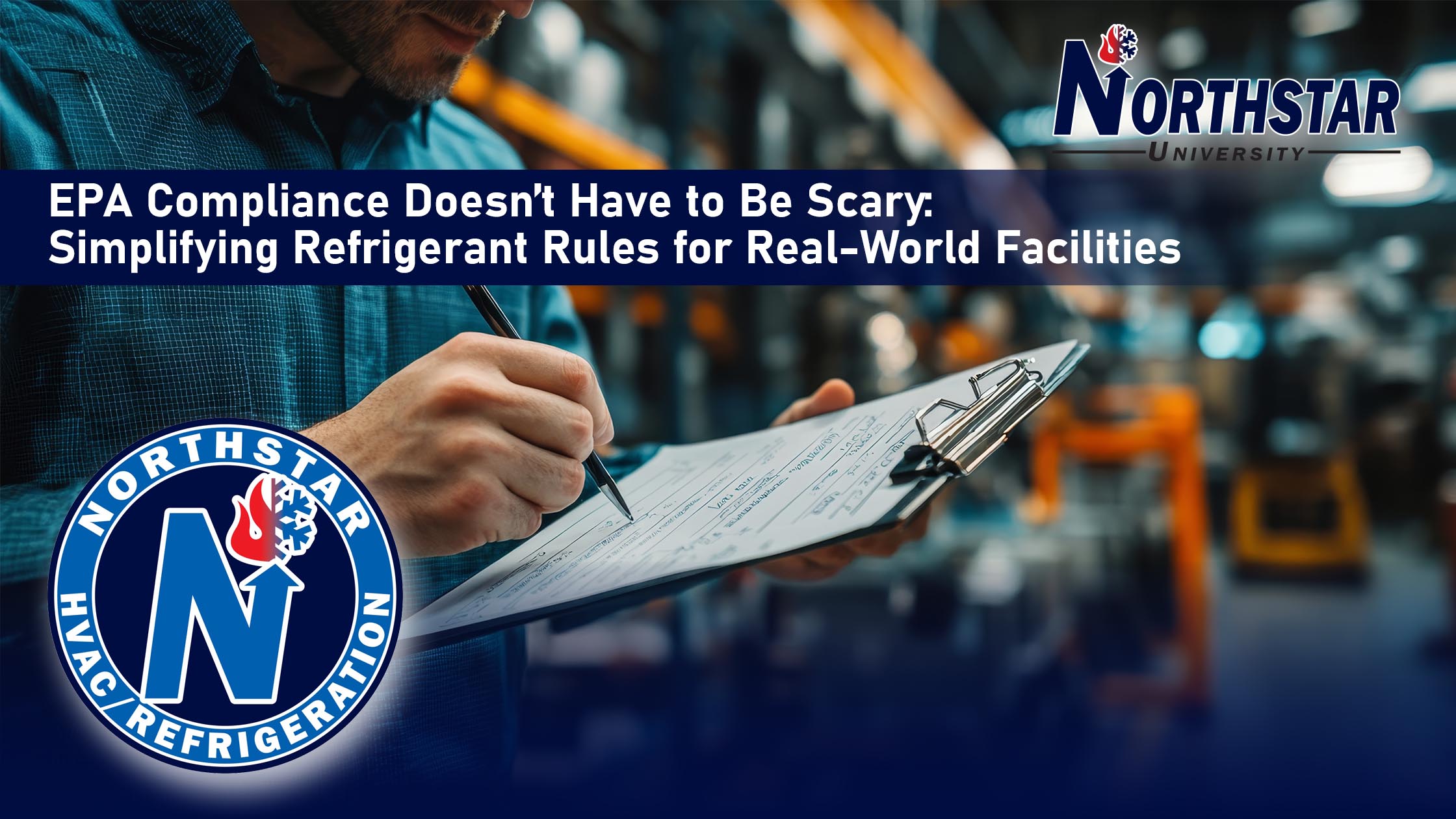EPA Compliance Doesn’t Have to Be Scary: Simplifying Refrigerant Rules for Real-World Facilities
EPA refrigerant regulations are changing quickly, and for many facility owners, plant managers, and HVAC/R contractors, keeping up with the details can feel overwhelming. Between the AIM Act’s HFC phasedown, updated safety standards, and new handling requirements, it’s easy to wonder whether your equipment — and your team — are truly prepared.
But here’s the good news:
EPA compliance is manageable when you understand what’s required and have the right support behind you.
At Northstar Refrigeration, we help businesses navigate these regulations every day. Below is a practical breakdown of what’s changing, what it means for your facility, and how to stay ahead without unnecessary stress.
Understanding What’s Changing: Key EPA Requirements
1. The AIM Act and the HFC Phasedown
The American Innovation and Manufacturing (AIM) Act outlines a long-term plan for reducing HFC production and use by 85% by 2036. As a result, high-GWP refrigerants like R-404A, R-507, and eventually R-410A will continue to become more expensive and harder to source.
What this means for facilities:
- Eventually, system retrofits or upgrades will be necessary.
- Low-GWP alternatives such as A2L blends, CO₂ (R744), and ammonia (R717) will become standard.
- Planning early helps avoid budget surprises and operational disruptions.
2. Updated Leak Detection and Recordkeeping Requirements
EPA refrigerant management rules require facilities to:
- Monitor and repair leaks above allowable thresholds
- Track and record refrigerant usage
- Maintain documentation for service, recovery, and disposal
- Report certain leak events depending on system size
Why this matters:
Proper leak management reduces emissions, protects equipment efficiency, and prevents costly violations.
3. Technician Certification and Safe Handling Requirements
Only EPA Section 608-certified technicians can handle regulated refrigerants. With newer refrigerants (especially A2Ls), technicians must understand updated safety codes like ASHRAE 15/34 and IIAR standards.
What this means for you:
Work only with qualified professionals who understand the refrigerant they’re handling — not all systems are serviced the same way.
Simplifying Compliance: Practical Steps for Facilities
EPA compliance becomes far less stressful when approached proactively:
✔ Keep accurate refrigerant records
Digital logs and organized reporting make inspections and audits straightforward.
✔ Implement scheduled leak detection
Routine leak checks reduce energy waste and prevent major leak events.
✔ Update safety procedures for low-GWP refrigerants
A2Ls, CO₂, and ammonia each have unique safety profiles — staff training is essential.
✔ Plan equipment upgrades in stages
A phased long-term approach can help manage budget, downtime, and operational impact.
✔ Work with a knowledgeable partner
Staying compliant is easier when your service provider tracks regulation changes for you.
How Northstar Refrigeration Supports Your Compliance Goals
Northstar integrates regulatory understanding into every project, service, and system assessment. Our team offers:
- Refrigerant tracking and documentation support
- Leak detection and preventative maintenance programs
- Assistance transitioning to low-GWP refrigerants
- Guidance on EPA, ASHRAE, and IIAR requirements
- System evaluations to prepare for future refrigerant changes
- Spare parts recommendations to minimize downtime and supply chain delays
📞 Have questions about EPA compliance? Need help preparing your facility?
Call (508) 888-3692 — we’re here to help you stay compliant, efficient, and confident.
